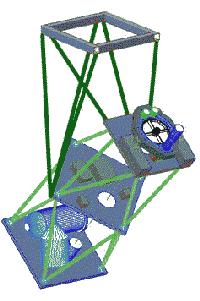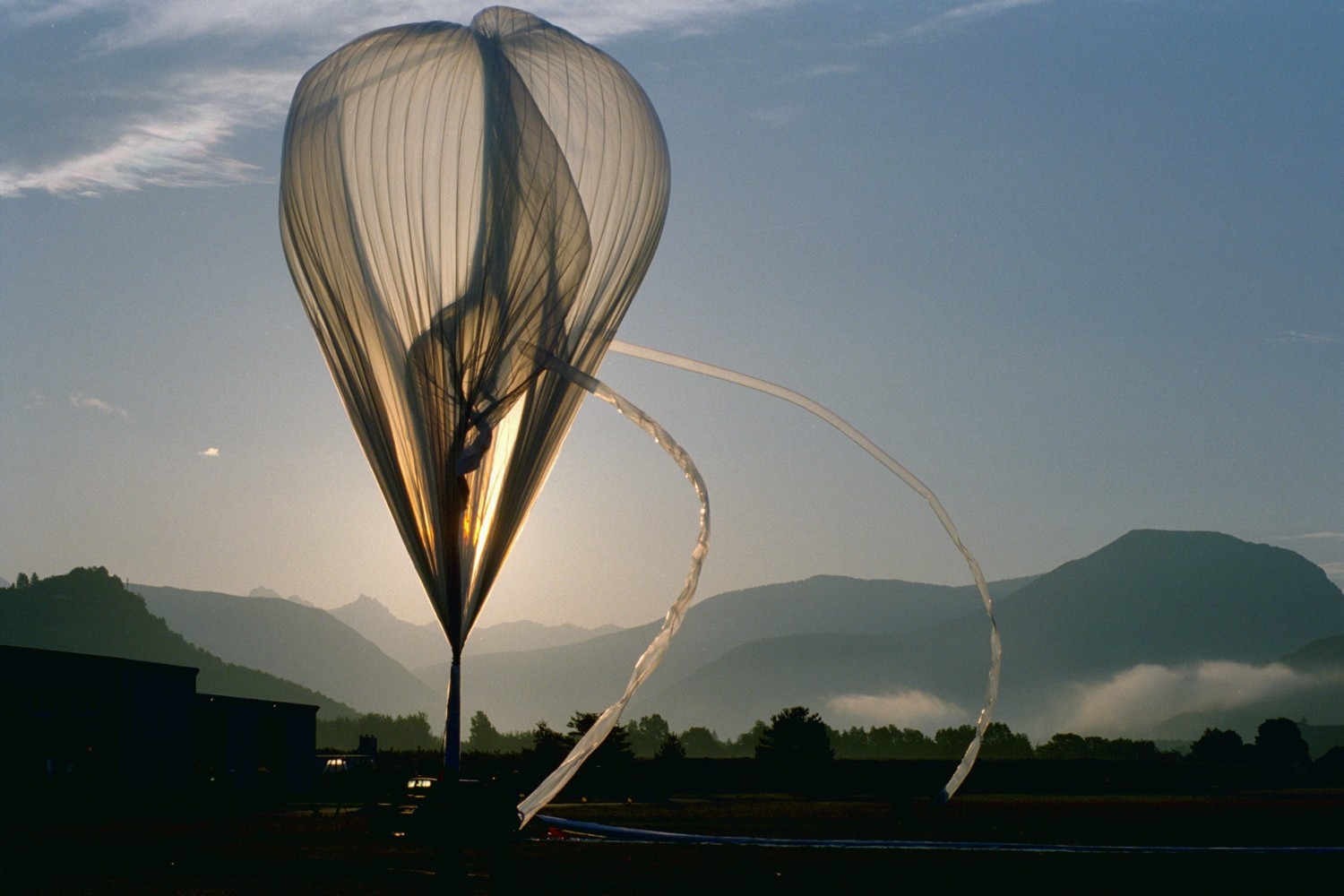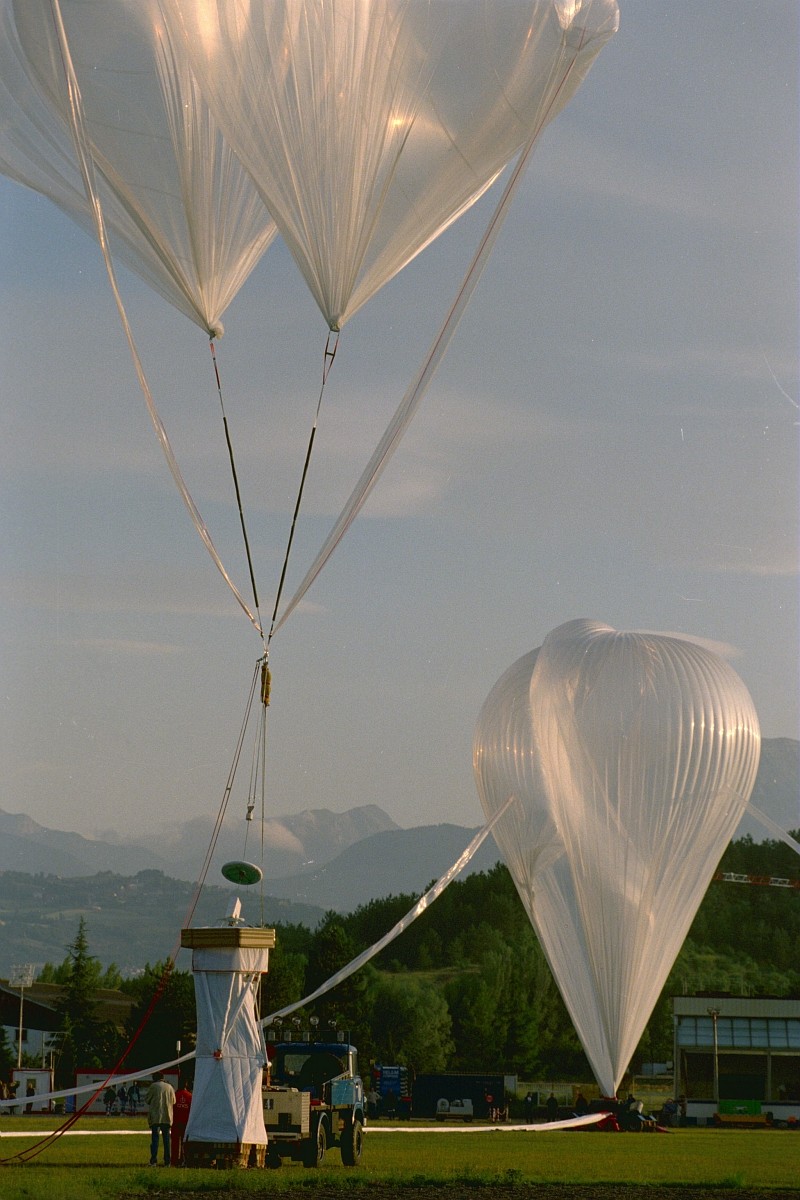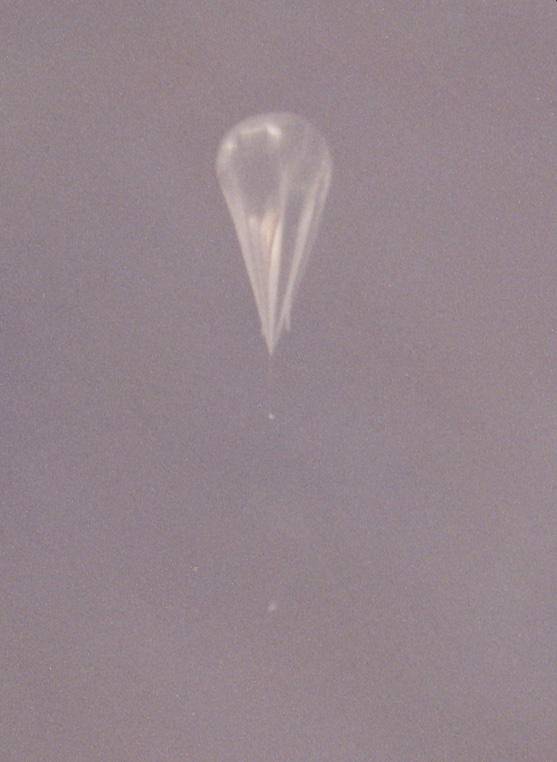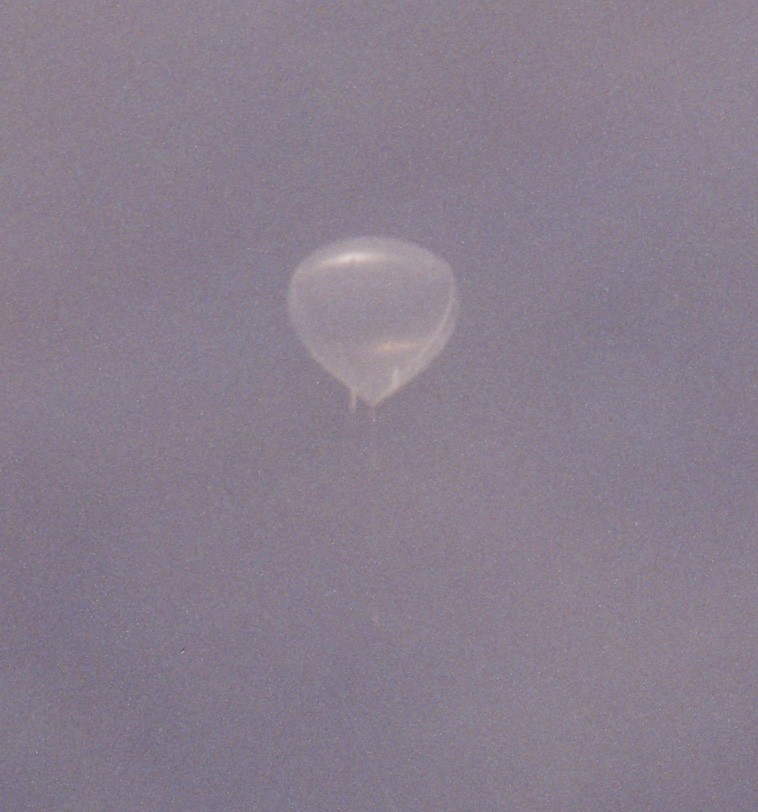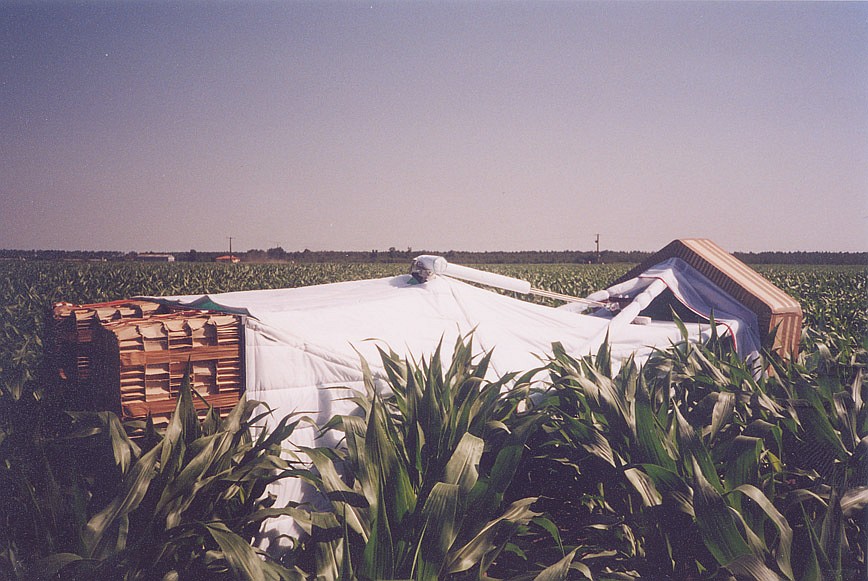Purpose of the flight and payload description
The objective of this project is to validate the concept of a Laue diffraction lens for nuclear astrophysics. Instruments of this type, benefiting from the dramatic improvement of the signal/noise ratio brought about by focusing, will combine unprecedented sensitivities with high angular resolution.
The instrument features a Laue diffraction lens, a 3x3 array of cryogenic germanium detectors, and a balloon gondola stabilizing the lens to a few arcseconds.
The lens consists of Ge/Si mosaic crystals, focusing gamma-ray photons from its 366 cm2 area onto a small solid state detector, with only 18 cm3 equivalent volume for background noise.
The diffracted energy of 170 keV results in a focal length of 279 cm, yet the entire payload weighed under 500 kg.
The telescope structure consists essentially of carbon fiber spars, aluminum fittings and honeycomb platforms. It is mainly this ''minimal design" that has brought the weight of CLAIRE below 500 kg.
Details of the balloon flight
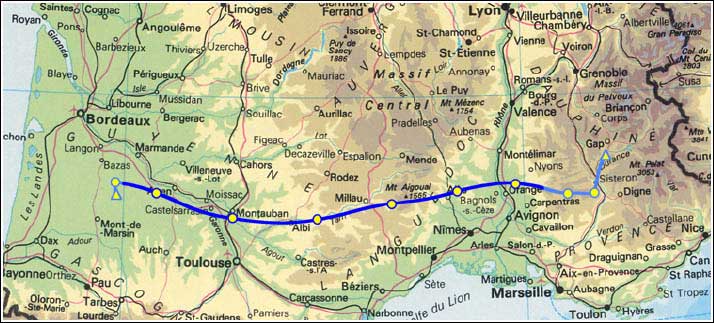
Balloon launched on: 6/15/2000 at 05:36
Launch site: Aérodrome de Gap-Tallard, Haute Alpes, France
Balloon launched by: Centre National d'Etudes Spatiales (CNES)
Balloon manufacturer/size/composition: Zero Pressure Balloon model 402z Zodiac - 402.000 m3
Balloon serial number: 402Z Nº 82
End of flight (L for landing time, W for last contact, otherwise termination time): 6/15/2000 at ~ 15:00
Balloon flight duration (F: time at float only, otherwise total flight time in d:days / h:hours or m:minutes - ): ~ 9 h
Landing site: In a corn field in Castel-Jaloux (Landes), France.
Payload weight: 787 kgs
Gondola weight: 500 kgs
After waiting few days for ideal weather conditions to allow a ceiling of long duration the launch operation started with the rollout of the payload at 2.00 local time on june 15, 2000.
The balloon inflation started at 6:18 and was launched at 7:36 using the auxiliary balloon dynamic method.
At 10:30 the balloon reaches the float altitude of 39.2 km.
At 10:58 started the observation of the Crab nebula.
After a float flight of near 6 hours the balloon was terminated at 17:00 in a corn field in Castel-Jaloux in the Landes.
The payload was recovered mainly intact. The only sever damage was to some of the detector elements but the lens survived the flight and recovery undamaged.
The primary objective of this first technological balloon flight was to test a gamma-ray lens under space conditions. The main target for test pointing was the Crab nebula and also were observed the active regions 9033, 9041 and 9042 from the Sun.
All the systems appear to have behaved nominally during the flight.
External references
- CLAIRE website Centre d'Etude Spatiale des Rayonnements
- CLAIRE : Premieres lumieres d'une lentille gamma PhD Thesis by Hubert Halloin, Université Toulouse, 2008
- The Claire gondola: Testing the first gamma-ray lens on a stratospheric balloon Experimental Astronomy, Volume 20, Issue 1-3, pp. 447-454
- The first flight of a gamma-ray lens Proceedings 4th INTEGRAL Workshop, 4-8 September 2000, Alicante, Spain
756If you consider this website interesting or useful, you can help me to keep it up and running with a small donation to cover the operational costs. Just the equivalent of the price of a cup of coffee helps a lot.

